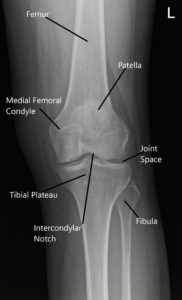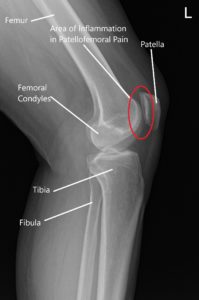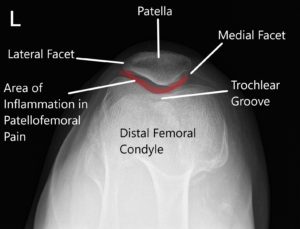Runners Knee
Knee pain, especially when accompanied by swelling, tenderness, or redness, can significantly impact daily life and should not be ignored. At Complete Orthopedics, our team specializes in diagnosing and treating runner’s knee (patellofemoral pain syndrome, PFPS), providing both non-surgical and surgical treatment options. We are committed to thoroughly evaluating your symptoms, diagnosing the underlying cause, and offering the most appropriate treatment plan.
How Common It Is and Who Gets It? (Epidemiology)
Runner’s knee is most common among active individuals, particularly those who engage in running or sports that involve jumping or repetitive knee motions. It primarily affects young adults who have recently increased their training intensity or distance, but it can also occur in athletes at any age. Though the condition is often seen in runners, it can also affect individuals with other sports-related knee stress.
Why It Happens – Causes (Etiology and Pathophysiology)
Runner’s knee can arise from multiple factors that involve the knee joint’s mechanics. The condition is typically caused by repetitive overuse or misalignment of the kneecap (patella). Conditions like chondromalacia patella (softening of the kneecap cartilage), iliotibial band syndrome (friction of the iliotibial band over the femur), and plica syndrome (inflammation of the knee lining) may also contribute to PFPS. It can be triggered by increased physical activity, inadequate training, or poor running form.
How the Body Part Normally Works? (Relevant Anatomy)
The patellofemoral joint is where the patella (kneecap) rests within the groove of the femur (thigh bone). The knee joint functions by allowing smooth bending and straightening movements, with the patella helping to stabilize and guide these motions. In PFPS, the alignment of the kneecap becomes compromised, often due to muscle imbalances, tight ligaments, or poor training, leading to pain and discomfort.


Normal X-ray of the knee joint showing the various structures in the Anteroposterior and Lateral view.

X-ray showing Skyline’s view of the patella.
What You Might Feel – Symptoms (Clinical Presentation)
The primary symptom of runner’s knee is anterior knee pain, which often has a gradual onset. Pain is typically felt in front of the knee, around or behind the kneecap. The pain is aggravated by activities that involve bending, squatting, kneeling, or climbing stairs. Patients may also experience swelling, a cracking or popping sound in the knee, and difficulty moving or straightening the leg due to pain and stiffness.
How Doctors Find the Problem? (Diagnosis and Imaging)
A physician will perform a detailed evaluation of the knee, including a physical examination to assess the knee’s stability and alignment. Special tests, like the patellar grind test or the Q-angle measurement, help evaluate how the patella tracks within its groove. Imaging tests like X-rays and MRIs are commonly used to rule out other potential causes of knee pain, such as fractures or arthritis, and to assess soft tissue conditions like cartilage damage or ligament strain.
Classification
Runner’s knee is typically classified based on the severity of the pain and its impact on the individual’s ability to perform physical activities. While most cases are classified as mild to moderate, more severe cases may involve underlying conditions like cartilage damage, which can require more intensive treatment.
Other Problems That Can Feel Similar (Differential Diagnosis)
Other conditions that may present with similar symptoms to runner’s knee include patellar tendinitis, iliotibial band syndrome, and meniscal tears. Osteoarthritis or a tear in the ACL or PCL can also lead to knee pain and instability, so a thorough diagnosis is necessary to differentiate between these conditions.
Treatment Options
Non-Surgical Care
Most cases of runner’s knee are effectively managed with conservative treatment:
-
Rest: Reducing activities that stress the knee, such as running or jumping.
-
Ice: Applying ice packs to the knee for 15-20 minutes several times a day to reduce swelling and pain.
-
Compression: Using compression bandages or knee braces to support the knee and control swelling.
-
Medications: Nonsteroidal anti-inflammatory drugs (NSAIDs) like ibuprofen or naproxen to manage pain and inflammation.
-
Physical Therapy: Focused on strengthening the quadriceps and other muscles around the knee, improving flexibility, and addressing any biomechanical issues.
Surgical Care
If conservative treatment does not provide relief or if the knee pain becomes chronic and debilitating, surgery may be required. Surgical options include:
-
Arthroscopic Surgery: A minimally invasive procedure where a camera and miniature tools are used to remove damaged cartilage or to release tight tendons around the knee.
-
Knee Cap Repositioning: In cases of malalignment, surgery to reposition the patella may be necessary to improve its tracking within the femoral groove.
Recovery and What to Expect After Treatment
Recovery from Runner’s Knee, or Patellofemoral Pain Syndrome (PFPS), involves a comprehensive approach that includes rest, rehabilitation exercises, and possibly medical interventions. The goal is to alleviate pain, restore normal function, and prevent future recurrences. Here’s a detailed outline of the recovery process:
Initial Rest and Pain Management
- Rest: It’s crucial to reduce activities that trigger knee pain, especially high-impact exercises like running and jumping. Switching to low-impact activities such as swimming or cycling can help maintain fitness without aggravating the knee.
- Ice and Compression: Applying ice packs to the knee for 15-20 minutes several times a day can help reduce swelling and pain. Using a compression bandage can also provide support and reduce swelling.
- Medications: Over-the-counter pain relievers such as ibuprofen or acetaminophen can be used to manage pain and inflammation.
Physical Therapy
- Strengthening Exercises: Strengthening the muscles around the knee, particularly the quadriceps, hamstrings, and hip abductors, can help improve the stability of the patella and distribute force more evenly during movement.
- Stretching: Tight muscles can contribute to the misalignment and stress on the knee. Regular stretching of the hamstrings, quadriceps, and calves is important.
- Patellar Taping or Bracing: Taping or using a brace can help stabilize the patella and distribute pressure more evenly across the joint.
Gradual Return to Activity
- Incremental Increase: As pain decreases, gradually reintroduce activities. Start with walking or gentle jogging before moving to more strenuous activities. It’s important to listen to your body and not rush this process.
- Technique Modification: Changes in running or sports techniques can reduce stress on your knees. Consider working with a sports therapist or coach to modify your technique.
Possible Risks or Side Effects (Complications)
For non-surgical treatments, the risks are minimal but may include inadequate healing or recurrence of pain if the knee is not adequately rested. Surgical risks include infection, bleeding, and potential complications from anesthesia. Long-term risks of surgery may involve joint stiffness or, in rare cases, complications related to knee alignment after repositioning procedures.
Do you have more questions?
What specific exercises help strengthen the muscles around the knee?
Exercises like straight-leg raises, wall sits, and step-ups can strengthen the quadriceps, hamstrings, and glutes, providing better support for the knee.
Can runner’s knee lead to more serious conditions if untreated?
Yes, prolonged misalignment and stress can lead to chronic pain and degeneration of the knee joint, potentially causing long-term damage.
Are there specific stretches recommended for preventing runner’s knee?
Stretching the hamstrings, quadriceps, and calves regularly can help maintain flexibility and reduce tension around the knee.
How long does it typically take to recover from runner’s knee?
Recovery can vary but generally takes 4-6 weeks with proper treatment and rest, depending on the severity.
What are the signs that my running shoes are not suitable?
Signs include uneven wear patterns on the soles, lack of support or cushioning, and discomfort while running.
Can runner’s knee be completely cured?
With proper treatment and preventive measures, most people can fully recover from runner’s knee and return to their activities without pain.
Is ice or heat better for treating runner’s knee pain?
Ice is generally recommended for reducing inflammation and pain after activities, while heat can help relax and loosen tissues during recovery phases.
How can I modify my running technique to prevent runner’s knee?
Focus on maintaining a shorter, more frequent stride, avoid overstriding, and run on softer surfaces whenever possible.
Are there any dietary considerations that can affect runner’s knee?
Maintaining a healthy weight can reduce stress on the knee, and a diet rich in anti-inflammatory foods may help manage symptoms.
What role do orthotics play in managing runner’s knee?
Orthotics can help correct foot imbalances such as flat feet or high arches, which might contribute to knee misalignment.
Should I stop running if I have runner’s knee?
It’s advisable to reduce or stop running until the pain subsides and gradually reintroduce activity as symptoms improve.
How do I know if my knee pain is runner’s knee or something else?
Runner’s knee typically presents as pain around the kneecap exacerbated by activities like running or climbing stairs. A doctor can provide a diagnosis.
Can weightlifting cause runner’s knee?
Yes, particularly exercises that place a lot of stress on the knees, such as squats or lunges, if not performed correctly.
What preventive exercises can I do at home?
Leg lifts, hamstring curls, and bridging can all strengthen the leg muscles and support the knee.
How often should I replace my running shoes?
Generally, every 300-500 miles, depending on your running style and the shoe quality.
What is the best surface to run on to avoid runner’s knee?
Soft, even surfaces like grass or synthetic tracks are better for reducing impact compared to hard surfaces like concrete.
Can yoga help with runner’s knee?
Yes, yoga can improve flexibility, balance, and strength, which are beneficial for knee health.
What are the first aid steps if I feel knee pain while running?
Stop running, apply ice to reduce inflammation, and rest the knee. Consult a physician if pain persists.
Are compression sleeves or braces effective for runner’s knee?
They can help provide support and stability to the knee, potentially alleviating pain.
How does body weight impact runner’s knee?
Excess weight increases stress on the knees, potentially worsening or triggering pain.
What are the best pain relief methods for acute runner’s knee episodes?
Over-the-counter pain relievers, ice applications, and rest are commonly recommended
Can swimming be a good alternative exercise for someone with runner’s knee?
Yes, swimming is a low-impactexercise for those with knee issues as it places no impact on the joints.
What types of footwear are recommended to prevent runner’s knee?
Shoes that offer good arch support, cushioning, and stability are ideal. It may also be helpful to consult a specialist to find the best fit for your running style and foot type.
Can improper running form lead directly to runner’s knee?
Yes, improper form, such as overstriding or poor foot landing, can increase stress on the knee joint and lead to pain.

Dr. Mo Athar
[et_pb_button admin_label="Button" button_url="https://www.cortho.org/general-appointment/" url_new_window="off" button_text="Schedule an Appointment" button_alignment="center" background_layout="light" custom_button="on" button_text_color="#FFFFFF" button_bg_color="#02770B" button_border_color="#FFFFFF" button_letter_spacing="1" button_font="Arial" button_on_hover="on" button_text_color_hover="#FFFFFF" button_bg_color_hover="#02770B" button_letter_spacing_hover="1" /]
